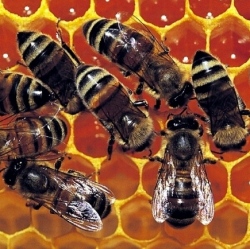
Honeybees, which pollinate nearly one-third of the food we eat, have been dying at unprecedented rates because of a mysterious phenomenon known as colony collapse disorder.The situation is so dire that the White House gave a task force just 180 days to devise a coping strategy to protect the bees.
The crisis is attributed to a mixture of disease, parasites, and pesticides. Other scientists are pursuing a different tack: replacing bees. While there’s no perfect solution, modern technology offers hope. Last year, Harvard University researchers led by engineering professor Robert Wood introduced the first RoboBees, bee-size robots with the ability to lift off the ground and hover midair when tethered to a power supply. The details were published in the journal Science.
A coauthor of that report, Harvard graduate student and mechanical engineer Kevin Ma, tells Business Insider that the team is “on the eve of the next big development.” Says Ma: “The robot can now carry more weight.” The project represents a breakthrough in the field of micro-aerial vehicles. It had previously been impossible to pack all the things needed to make a robot fly onto such a small structure and keep it lightweight.
